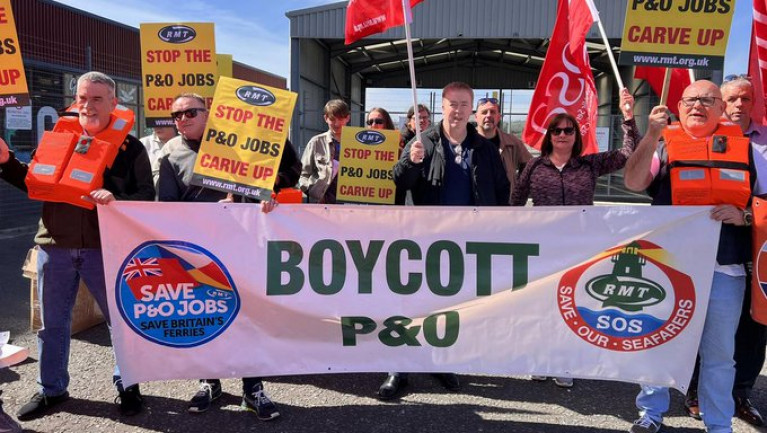Displaying items by tag: Larne Port
Profits at P&O Ferrymasters in Larne Port Recorded £11.1m in Year Parent Company Sacked 800 Staff & Crew
In Larne Port, Co.Antrim, P&O Ferrymasters recorded a pre-tax profit of £11.1 million in results for the year in which its parent company, P&O Ferries, fired 800 workers across the UK and Ireland, the Belfast Telegraph reveals.
According to accounts for 2022, which were filed at Companies House last month by P&O Ferrymasters, the harbour town that connects Cairnryan, Scotland, had a strong financial performance. This took place just as its parent ferry company fired the existing workforce in order to hire other workers based on poorer terms.
The road and rail transport operations of P&O Ferrymasters are to be found internationally, as well as freight management within Europe.
Both North Channel ports of Larne and Cairnryan are part of the P&O Ferries group and are owned by Dubai-headquartered conglomerate DP World, which hit the headlines in March 2022 when a P&O Ferries official delivered a video message. This was issued to staff and crew, informing them their jobs were ending with immediate effect.
The mass sacking affected 800 people in total, including dozens of workers on the Larne-Cairnryan route who held protests at the north-east harbour over the actions of their former employer.
More from the newspaper on the story.
Former Ferry Workers of P&O Block Entrance at Larne Port
Former ferry workers of P&O have blocked an entrance to Larne Port in a ramping up of protest action.
Protests have been ongoing reports Belfast Telegraph, at the port since P&O’s decision in March to sack almost 800 workers without notice and replace them with cheaper agency staff.
At around 2pm on Friday, protesters took part in a blockade at an entrance to Larne Port. The action lasted around an hour-and-a-half.
Similar action was taken at Cairnryan Port in southern Scotland.
It comes after an incident on Tuesday in which the P&O ferry European Causeway lost power in the Irish Sea.
The ferry was adrift five miles off the coast of Larne for more than an hour.
#ferries - On board a passenger ferry a fire broke out when berthed in Larne Port yesterday, just months after lorries toppled over on the same P&O ship.
As The Irish News reports, emergency services were tasked to a blaze in the engine room of the European Causeway ship at around 4.30pm on Sunday, but no injuries were reported and everyone was accounted for.
The fire was extinguished by the ship's crew and internal fire suppression system, according to the Northern Ireland Fire and Rescue Service, but three fire engines attended the scene.
The European Causeway passenger ferry operates between Larne and Cairnryan in Scotland.
For more on the story including a previous incident which involved vehicles overturning on the ferry deck in December, click here.






























































